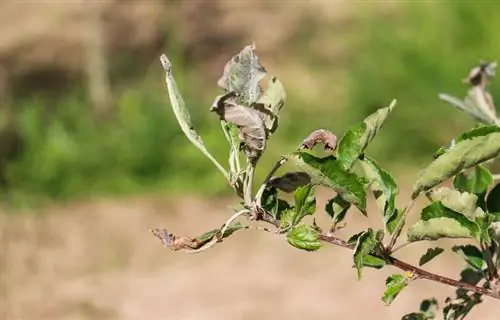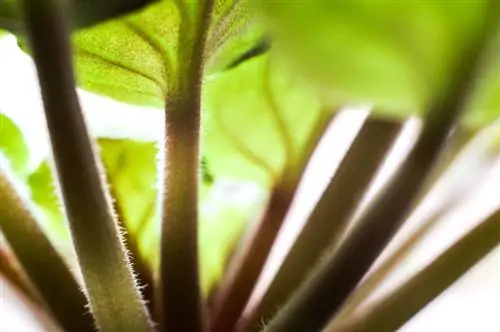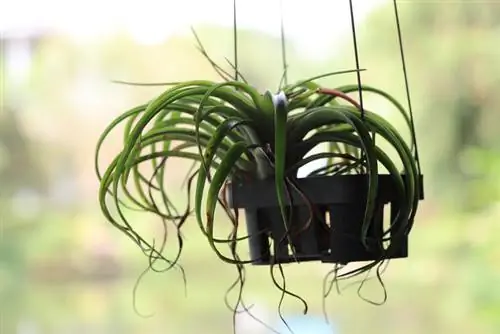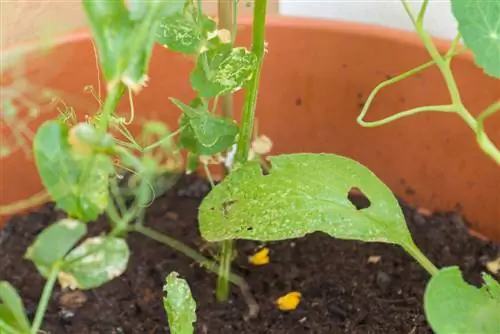- Author admin [email protected].
- Public 2023-12-16 16:46.
- Last modified 2025-06-01 06:02.
Their robust constitution protects crabapple varieties from numerous diseases that regularly plague cultivated apples. However, the magnificent ornamental tree is not immune to two fungal infections. We would be happy to explain to you what these are and how to combat the diseases.
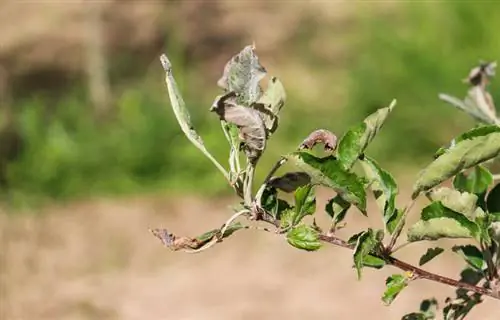
What diseases occur in crabapple trees and how can you combat them?
Crabapple diseases are mainly apple scab and apple powdery mildew. Apple scab leads to leaf fall and can be prevented through site selection, sprays and mulching. Apple powdery mildew causes a mealy coating on leaves and can be controlled by pruning, breaking out infection sites and fungicides.
Apple scab drops the leaves
One of the most important diseases in fruit cultivation is the fungal infection apple scab (Venturia inaequalis). In wet weather, the cunning fungal spores strike and settle on the leaves. This results in yellow-brown leaf spots that subsequently cover the entire foliage. Leaf fall occurs, whereupon the crabapple becomes bald and dies. Direct combat is not very promising because the exact time must be known.
Effective prevention
So that your favorite crabapple is not destroyed by scab disease, we recommend the following targeted prevention measures:
- Plant crabapples in a sunny, airy location so that the foliage dries quickly
- Before sprouting, spray with horsetail broth, liverwort extract, Oscorna fungus preventative or Neudovital
- Keep the root disc loose and mulch consistently for vital soil life
Furthermore, various Malus hybrids have proven to be quite resistant. These include 'Butterball' and 'Evereste' as well as the dwarf variety 'Pom Zai'.
Fight apple powdery mildew consistently - this is how it works
The powdery mildew fungus called Podosphaera leucotricha has specialized in Malus species. The first symptoms appear as soon as the buds sprout in the form of spread bud scales. As the process progresses, flower clusters and leaves take care of themselves. A mealy coating covers the leaves. The few crabapples are covered with a net-like skin. How to fight the disease:
- When pruning in late winter, cut off all visibly infected shoot tips
- Consistently break out all infection sites as growth continues
- Additionally treat the crabapple with fungicides against powdery mildew
In organic fruit cultivation, a home remedy with milk has proven to be excellent in combating apple powdery mildew. To do this, mix water and fresh milk (not long-life milk) in a ratio of 2:1. Spray this mixture onto the diseased plant every few days. Please be sure to also spray the undersides of the leaves.
Tip
If aphids dare to attack your beautiful crabapple, put the beasts to rest with soft soap. Add 1 tablespoon of pure core or soft soap and 1 splash of spirit to 1 liter of water. Applied to the foliage every 2-3 days, the plague quickly comes to an end.

